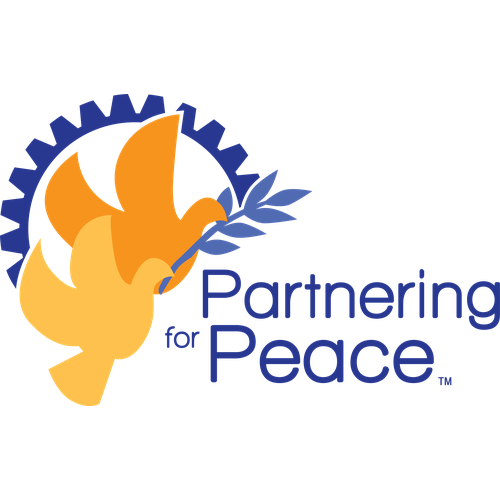
The World’s Largest Extended Family: Rotary and Peace Corps Team Up
July 2022
Kevin Denny, MD, MPH, MA (Anthropology)
In 2014, the Peace Corps and Rotary signed a memo of understanding to work in an alliance to expand and improve the ability to provide resources to countries where the Peace Corps is active.
Having been a Rotarian and, having initiated several Rotary Matching Grants in the past, it was easy to see how the union of the Peace Corps and Rotary is a natural fit. In fact, the combination of over 240,000 RPCVs with the 1.4 million Rotarians in over 15,000 clubs in 145 countries around the globe would arguably constitute the world’s largest extended family.
However, envisaging this alliance, it is important to appreciate how little RPCVs know about Rotary, and how few Rotarians understand the role played by PCVs in the field and, importantly, after they have returned home. In spite of the fact that Rotary has a long history of supporting international projects around the world, most PCVs in the field have never heard of Rotary and never have had a reason to explore how they might team up with Rotarians to benefit their communities.
Here are a few things important for PCVs to know about their new partner. In spite of the fact that Rotarians have supported projects around the world for over a century, all commitments for international projects come from the club level. Typically a club member is made aware of a need and brings it to the attention of his club. To present a theoretical, but typical, example: A Rotarian explains to the club that a secondary school in needs help building latrines in a remote community in Eswatini, a country few Rotarians, or present readers, could find on a map! The club agrees it may be a project to undertake, but much more information would be needed.
The club learns by correspondence with the headmaster that the real problem is that the number of boys and girls starting primary school may be equal, but by the time they reach puberty, many girls drop out because of the lack of sanitation and privacy at their schools. Young women, eager for education, drop out of school and it is the community’s loss. By the time a secondary school class graduates, the number of boys who graduate greatly outnumbers the girls.
With this information, club members understand the broader implication of building latrines and pledge their support to the project.
The club learn from those planning the project on the ground that it will require about 15 thousand dollars to build a girls facility. Club members, acutely aware of the importance of gender equality, agree that a facility needs to be provided for the boys, as well. So, the costs goes up to $25,000 for both. Then someone asks "Don’t the teachers need facilities as well.” The budget now climbs to $30,000.
Before the project can be approved, the next required step is that the club contact a Rotary club in the country itself to accept the responsibility of becoming the in-country sponsor, with the role of identifying the need for the project, monitoring project progress and providing reliable financial accountability. Another requirement is that the community must demonstrate their commitment to the project. The in-country Rotarians make a site visit, during which the meet with headmaster and students. They also meet with community leaders who pledge their support, and, in fact have begun burning bricks as part of their contribution.
The next question for the club is how much money they need to raise. Fortunately, most clubs will have had matching grants in the past and know how they work. They know they will not have to raise all the money themselves, as any money they raise will be matched by the District Rotary (Usually made up of 30- clubs.) The plan will then go to Rotary International headquarters, where, if approved, will add 80% of the amount provided by the District.
Now working backwards, the club can figure out how much they will have to raise to carry out the project. The club is confident it can raise $6000 USD, and with district match that will be become $1200. Then, with and additional RI contribution of $9.6000, it will come to $21.600 USD ... still well short of their goal. Appreciating the value of the project, they approach a club in the town nearest them and find they are eager to join in the effort, but, as it is a smaller club, they can raise only $3,000. Together the two clubs commit to raise $9,000. After the district match, this becomes this becomes $18,000 and, with the contribution of Rotary International of 14.4K, the total is now 32.4K. The club can report back to the school that the project can begin. With adequate funding, the club agrees to meet the headmaster’s added request for help providing some much needed office space for the teachers.
As the Peace Corps begins returning PCVs to the field, a new opportunity presents itself. The in-country Peace Corps director is made aware of the project and reports that a new group of PCV teachers will be arriving in three months, and it would be possible to assign one of them to this secondary school. As a bonus, she adds that they are always looking for projects for teachers during school breaks and this would be good one.
The cascade has begun. The “world’s largest extended family” is now demonstrating its full potential and can provide an example for other clubs to follow.

